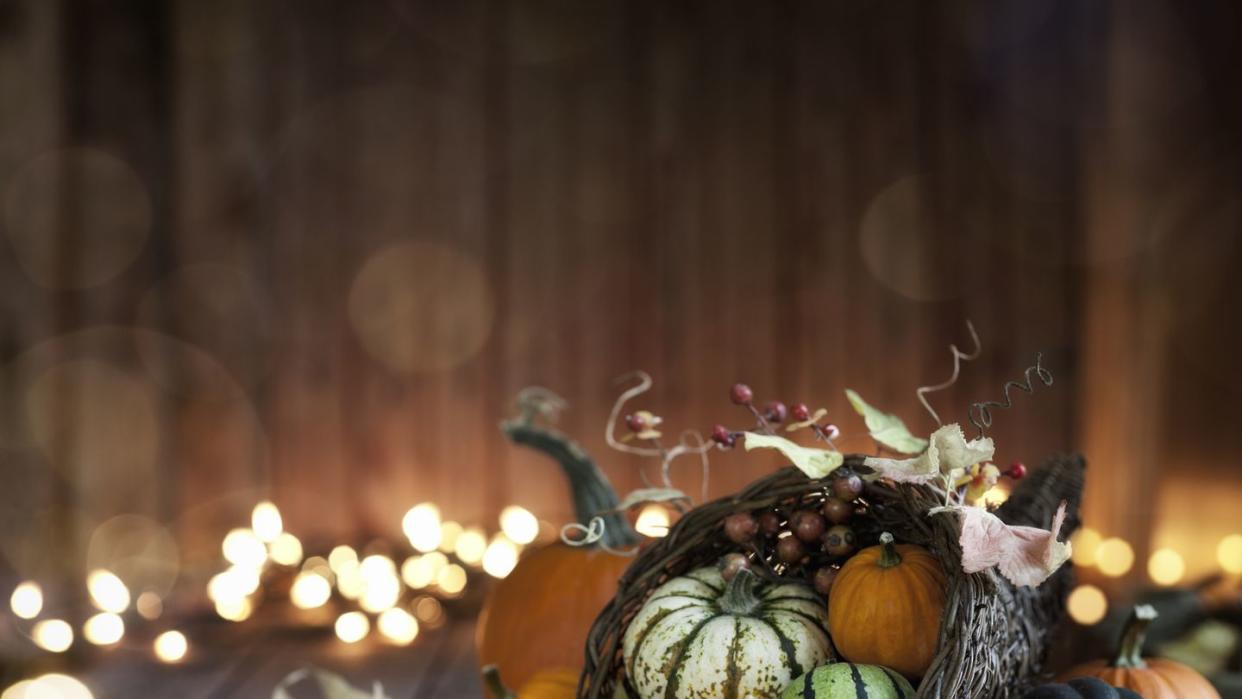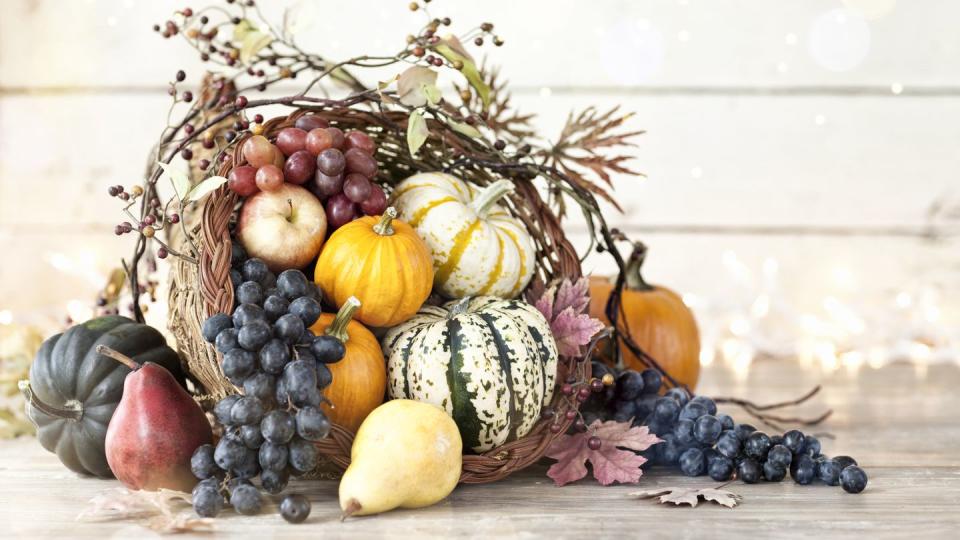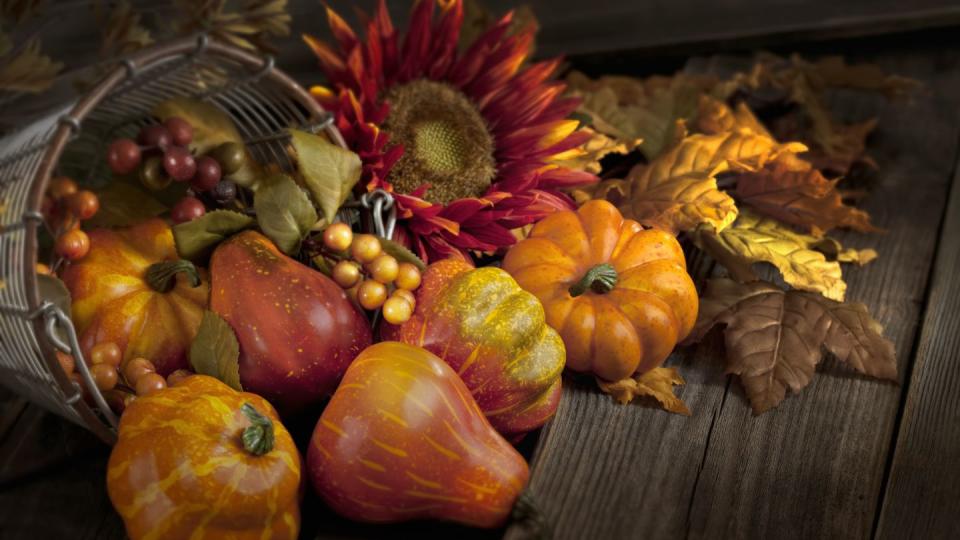Turkey Day Trivia: Why Is the Cornucopia a Symbol of Thanksgiving?

You probably made plenty of cornucopia crafts as a kid and know it has something to do with Thanksgiving, but what exactly is it? Here we give you a rundown of everything you need to know about the Thanksgiving cornucopia (pronounced kor·nuh·kow·pee·uh), its origins, and it symbolism.
Knowing a bit about the horn-shaped basket is super to take your Thanksgiving trivia skills next level. Sure you fill them in the fall and use the decoration as a Thanksgiving centerpiece to set the tone for your Thanksgiving dinner. But what do you fill it with? What is the history of the cornucopia? What does it symbolize and where does it appear in mythology? Not to worry, we have answers to all of those questions about this eye-catching decor item that goes far back in history—far before the the story of the Pilgrims' first Thanksgiving—for you. (Fun fact: Its origins date back to the times of ancient Greeks and Romans!)
Here's to a fun conversation starter for your Turkey Day gatherings this year! And to that cornucopia on the table too!

What's the history of the Thanksgiving cornucopia?
The word "cornucopia" is derived from two Latin words: cornu, meaning "horn," and copia, meaning "plenty." A frequent presence in Greek and Roman folklore, the overflowing cornucopia was often depicted as a symbolic accessory carried by gods and goddesses like Hercules, Fortuna, and Demeter. It was first described as an actual animal "horn" taken from Amalthea, the goat nurse of Zeus. According to the ancient Greeks, baby Zeus was being cared for and fed by Amalthea when he broke off one of her horns, which began to emit a constant supply of food for him. That's how this "horn of plenty" first came to symbolize prosperity, wealth, and abundance.
The pagan symbol was later adopted by Christians and used often in European harvest festivals to celebrate lush, bountiful crops. It was also used on currencies, coats of arms, and in church decorations.

Why is the cornucopia a symbol of Thanksgiving? And was there a cornucopia at the first Thanksgiving?
Thanksgiving has always been an ode to harvest time, and it's always taken place in the fall—so it's natural that the holiday would feature the cornucopia, which historically embodies those things. Beyond that hypothesis though, it's unknown when or why the cornucopia became associated with the American holiday. Historians have long surmised that it may have been a nod back to those European harvest festivals, but that must have happened sometime after the first Thanksgiving. There's no formal record of a cornucopia appearing there.
What is the purpose of a cornucopia?
Today, the cornucopia is used purely for Thanksgiving decorations. It continues to symbolize abundance, a bountiful harvest, and, by extension, an appreciation for both of those things. It makes sense, then, that Americans today still use the decorations as centerpieces for their Thanksgiving table. They're also widely used in children's crafts.
How do you fill a cornucopia—and where should you display it?
You might want to start by putting something in it. Just about anything and everything can be placed in a cornucopia, of course, but in the U.S., it's typically filled to the point of overflowing with a variety of fruits, veggies, grains, and pumpkins, all of which share a color scheme or are specific to the autumn season. As for where to put it, the possibilities are endless: Place the filled cornucopia in the center of your Thanksgiving table for a lush-looking centerpiece, add it to a kitchen counter or island for a splash of festive charm all season long, or even display it on a bureau or other tabletop surface anywhere in your home.
How should you style a cornucopia?
There are no rules when it comes to styling cornucopias. But we're partial to an organic, relaxed vibe—and a cornucopia that's brimming with fresh produce is an easy way to get there. Instead of arranging your gourds in a carefully considered pattern or ensuring that they're placed just so, allow them to spill out of the inner cavern and onto your table for a look that's as effortless and natural as it is beautiful.
Of course, you don't have to stick to mini pumpkins and squash. Try adding succulents to your cornucopias as demonstrated in the above video. Or, play around with fresh flowers and wrapped candies. If the cornucopia will be displayed at a kids' table, you could even add some small trinkets or toys for the little ones. The choice is yours!
You Might Also Like


